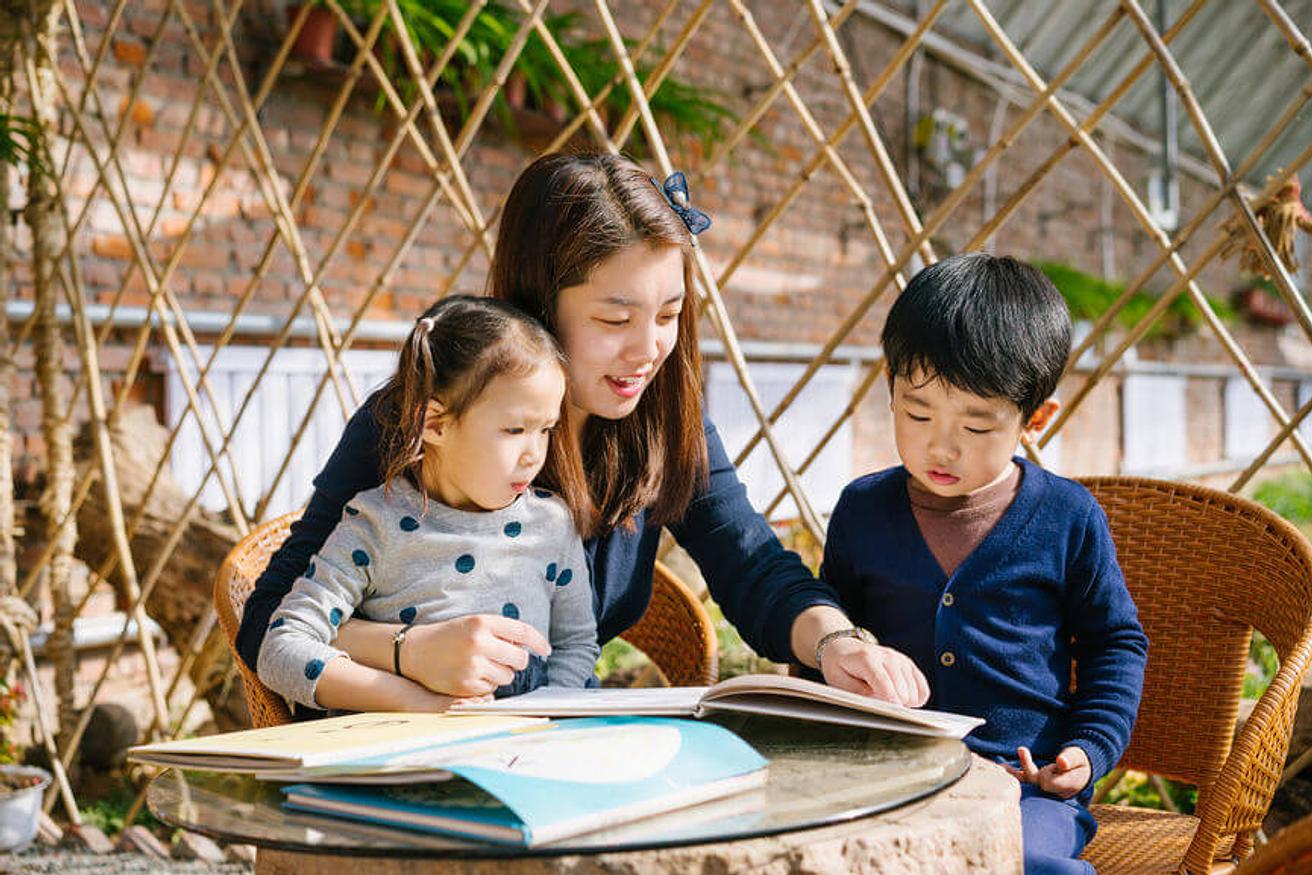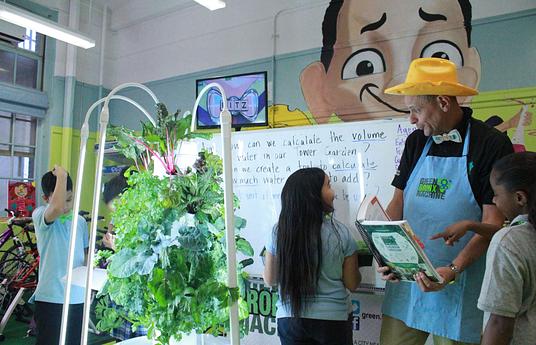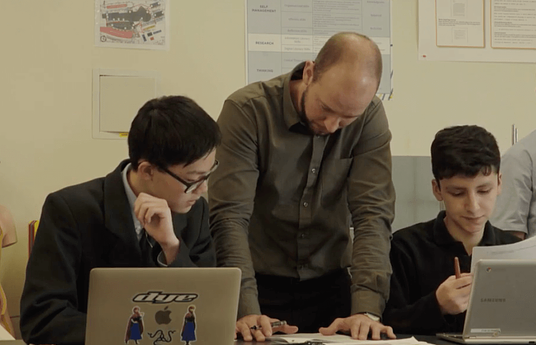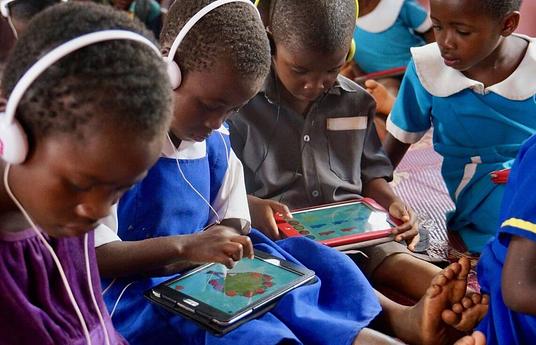Education may be one of the main ways to brighten the future of a child, the only thing that might pip it to the post is parents. In a study that included over seventy thousand children, over five decades, it was discovered that children growing up in poverty are already a year behind their wealthier counterparts by the age of three in educational tests.
However, the study found that some children still manage to do well later in life, despite being behind so early on. How have these children overcome these unfortunate circumstances? Studies suggest it could all come down to their parents.
‘Parents really matter,’ explains Helen Pearson, science journalist, editor, and author, in her talk Lessons From The Longest Study In Human Development. ‘In this study, children who had engaged, interested parents, ones who were ambitious for their future were more likely to escape from a difficult start. It seems parents and what they do are really, really important, especially in the first few years in life.’
How can parents improve their child’s chance to do well educationally? The tasks involved are relatively simple, as Pearson describes, ‘Quite small things that parents do are associated with a child doing better in life. Things like talking and listening to a child, responding to them warmly, teaching them their letters and numbers, taking them on trips and visits. Reading to them every day seems really important too.’
A child who had parents who read to them every day when they were five, and then took an interest in their education when they were ten, were significantly less likely to be in poverty by the time they were thirty years old.
Unfortunately, not every parent can afford books, has the literacy level to read to their child or the time to due to work commitments. In this case, schools could substitute this practice by utilizing an approach like Reading Grandmas and Grandpas.
In Finland schools have addressed high levels of immigration, with many children therefore not being proficient in their new home’s mother tongue, by inviting older members of the community into classrooms.
Called ‘Reading Grandmas and Grandpas’, the elderly community members help to improve student’s reading skills and visit classrooms for half a lesson to read with the children. They are highly trained in reading techniques that help to establish reading fluency and learning new vocabulary. During these sessions, the Reading Grandmas and Grandpas give their undivided attention to the child, providing encouragement and perhaps even sparking a lifelong interest in reading.

Though instigated to support bilingual students, the approach can be used and adapted for schools where high levels of poverty have meant children have fallen behind educationally and need help. It can also be a way of opening schools up to the community, investing other people’s value in state education and utilizing the resources available at a low-cost for schools. It can also help connect older generations with younger ones, fostering a more compassionate and caring community, breaking generational divides.
Reading for pleasure, Pearson explains, is imperative for a child to do well in every subject, including maths and spelling, ‘Data showed that children who were reading for pleasure at the ages of five or ten, were more likely to go on to score better in exams at a later age.’
You could even establish a reading cafe, where everyone chooses a book to read off a menu, to help include parents who may otherwise be disengaged from education. Parents can watch children read, see the learning first-hand making them more involved in their child’s education, and can then read to their child themselves once they feel confident.
The positive and collective environment can help parents feel like they belong within the school grounds too, creating a more fulfilling relationship between themselves and the education system. For those who have a different native language to the school’s, it can also be helpful to run literacy lessons which help the parent develop their own language skills, making it easier for them to communicate with their child’s teachers, whilst also helping a child integrate and learn their new local language.
Another way to boost young children’s literacy skills – along with their parents – is through Talking Stickers.
Talking Stickers are ordinary picture stickers, which of course children love, but they are special in the way that they can record and replay sounds using a device. So if children put the device over the sticker they will hear the words associated with the image. Talking Stickers were developed because the more words children are exposed to, especially in their early years, the better their brains will develop, and therefore the better they will do at school reducing the chance they may drop out.
For any parent with a small child, repetition will be something they are used to. Small children love to repeat a task, word, book, episode – anything – over and over again. Which is what makes Talking Sticker’s approach so effective, children love to use the device to hear the sticker’s word be repeated to them again and again.
Though Talking Stickers were designed to be a home-based solution, they’ve been found to be extremely beneficial in the classroom too. Talking Stickers makes it possible for classes and educational information to be repeatable too, reinforcing what a child has learned and making sure they didn’t miss anything – whilst feeding into a child’s natural desire to repeat something. It’s like the child is receiving individual care and attention from the teacher, as they’re able to listen to what the teacher said again and again.
The approach is also extremely playful, making learning a natural, exciting and enjoyable experience – just as it should be! This creates a positive relationship between the child and learning, an excellent and vital foundation to be laid during a child’s early years.
Talking Stickers was originally designed to support the 10 million children living in urban slums in India. Through observations, Talking Stickers have found that not only do these children benefit from using this approach, but the 20 million parents who may have missed out on education can as well, as they love to play with their children with Talking Stickers, meaning they learn the vocabulary too.
Receiving positive news from their child’s school can also help to build bridges, especially with parents who may have had a negative experience at school themselves. If you think about it from a personal point of view, none of us like to receive negative feedback, so if the only time you contact a parent is when their child is in trouble or they as a parent haven’t done something – of course the outcome is going to be a negative relationship between the family and the school, and this usually means the child and their education will suffer as a result.
Social media provides some instant ways that teachers can share information with the parents of their class, such as sharing projects they’re working on or to share observations, which can provide a window into their child’s education and show the positives their child is achieving.
Usually, reports and feedback are retroactive, looking back at what a child has done well or badly in over the last term or year. For children who aren’t doing well at school, this can be discouraging and for parents, it can be difficult to then hold positive relationships with the school. The innovation, Live Time Assessment And Continuous Feedback, looks to change this by having students, parents, and teachers collaborating together on a student’s educational journey.
Using free, web-based applications, such as Google Docs, to create a live-time feedback folder, teachers write assessments which are shared with students and parents at regular points throughout the year. Parents are able to see progress and growth in real time and students are clear on how they can improve their own learning.
This approach can demystify the education process, helping parents understand where their child needs help rather than simply giving them a bad grade at the end of the year. Parents can then get involved and work with the teacher to make sure their child doesn’t fall behind. It also encourages parents to continue a child’s learning at home and that this doesn’t end when they leave the school premises. 80% of parents during the pilot of the innovation found that the feedback folder was helpful for understanding their child’s progress.
In areas where formal education may be a newer phenomenon, it’s vital for schools to reach out to communities and make them invested in their child’s education. Organizations who work in these areas to provide education to children in some of the most vulnerable areas of the world especially need to be aware of this and can learn from nonprofits such as BRAC.
BRAC’s boat school programme in Bangladesh brings education to those who are unable to go to school due to excessive flooding making it a long or dangerous journey to school. BRAC combats this issue by providing boats for the children to either give them transport to their school or to create floating classrooms to address the problem. In these boat-classes, teachers are employed from the local area in order to create a bridge between these remote communities and the education their children are receiving. This helps to break down barriers between education and rural-dwelling parents and helps the classes to truly serve and be designed for the community they’re for.
Over in New York, Green Bronx Machine shows how a city-based school can help serve the community by providing for a need that they have personally. The Bronx is the least healthy county in New York State, with the highest rates of childhood obesity, diabetes and heart disease, and is where most children qualify for free school meals and their families are in receipt of food stamps.
Teacher Stephen Ritz converted a disused library within the school to create a wellness centre and uses the centre to teach students about the art and science of growing vegetables indoors with low cost replicable technology. As well as sessions before and after school, classes are timetabled to attend the Green Bronx Machine as part of their normal school day.

Children learn about, grow and eat the vegetables and fruit they’re working on and even get to take a bag of groceries home for their families too. In an area where most families rely on food stamps, this act of thoughtfulness for the local community can help to build relationships between the school institution and the families it’s helping to educate.
Both BRAC boat school and Green Bronx Machine show how being aware of the individual needs of a community can help to strengthen the education a child receives whilst encouraging parents to value that education and be more involved in it too.
Of course, these are just first steps. As Pearson concludes in her talk, ‘Data showed that even when children grow up in persistent poverty with good parents, who put them to bed on time, reading to them and everything else, it only got those children so far. Good parenting only reduced the educational gap between rich and poor children by about 50%. Now that means that poverty leaves a really lasting scar. And it means if we really want to ensure the success and well-being of the next generation, tackling poverty is a really important thing to do.’
As always, to fix any problem we must all collaborate together, we can’t just assume parents and schools must take the burden alone. Parents, educators, policymakers, employers, everyone in our global community must work together to help future generations escape poverty. Which is why our most recent research report Every Child To Flourish includes the views of a range of stakeholders in education, including students.
Our report found that the number one concern for children was to have the skills they need in order to flourish in their careers. For young people to go on and pursue meaningful careers we must make sure they’re ready to learn at the start of their educational career and continue to discover it’s value for themselves as they grow. Though parents and educators aren’t the only ones responsible for a child’s eventual outcome, there’s plenty of brilliant things going on in the world that show if we do our bit individually, we can help transform a child’s future.




